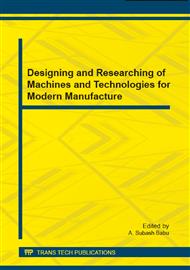p.25
p.28
p.32
p.36
p.41
p.46
p.52
p.56
p.63
The Strength Analysis of Francis Turbine Runner Based on the Fluid-Solid Coupling
Abstract:
This paper does unidirectional fluid-solid coupling calculation on the runner strength under three designed head loading conditions of a certain Francis turbine in the north-eastern China. The water pressure on the blade in the flow fields of different operating conditions is calculated by means of CFD software CFX. With the help of ansys workbench, the water pressure is loaded to the blade as structural load to conclude the static stress distribution and deformation of the runner under different operating conditions. The results show that the maximum static stress increases with the rise of the flow and appears near the influent side of the blade connected to the runner crown; the maximum deformation increases with the rise of the flow and appears on the band. The results provides effective basis for the structural design and safe operation of the Francis turbine.
Info:
Periodical:
Pages:
41-45
Citation:
Online since:
December 2014
Authors:
Price:
Сopyright:
© 2015 Trans Tech Publications Ltd. All Rights Reserved
Share:
Citation:


